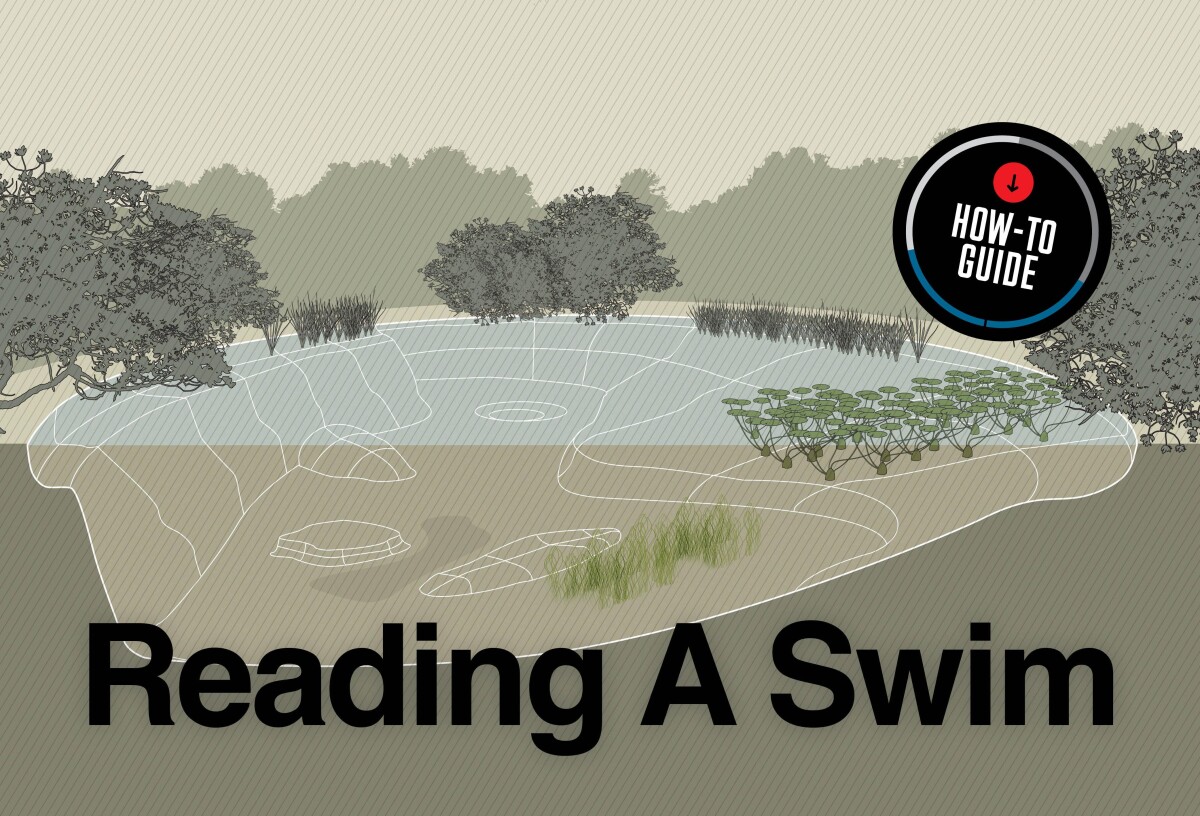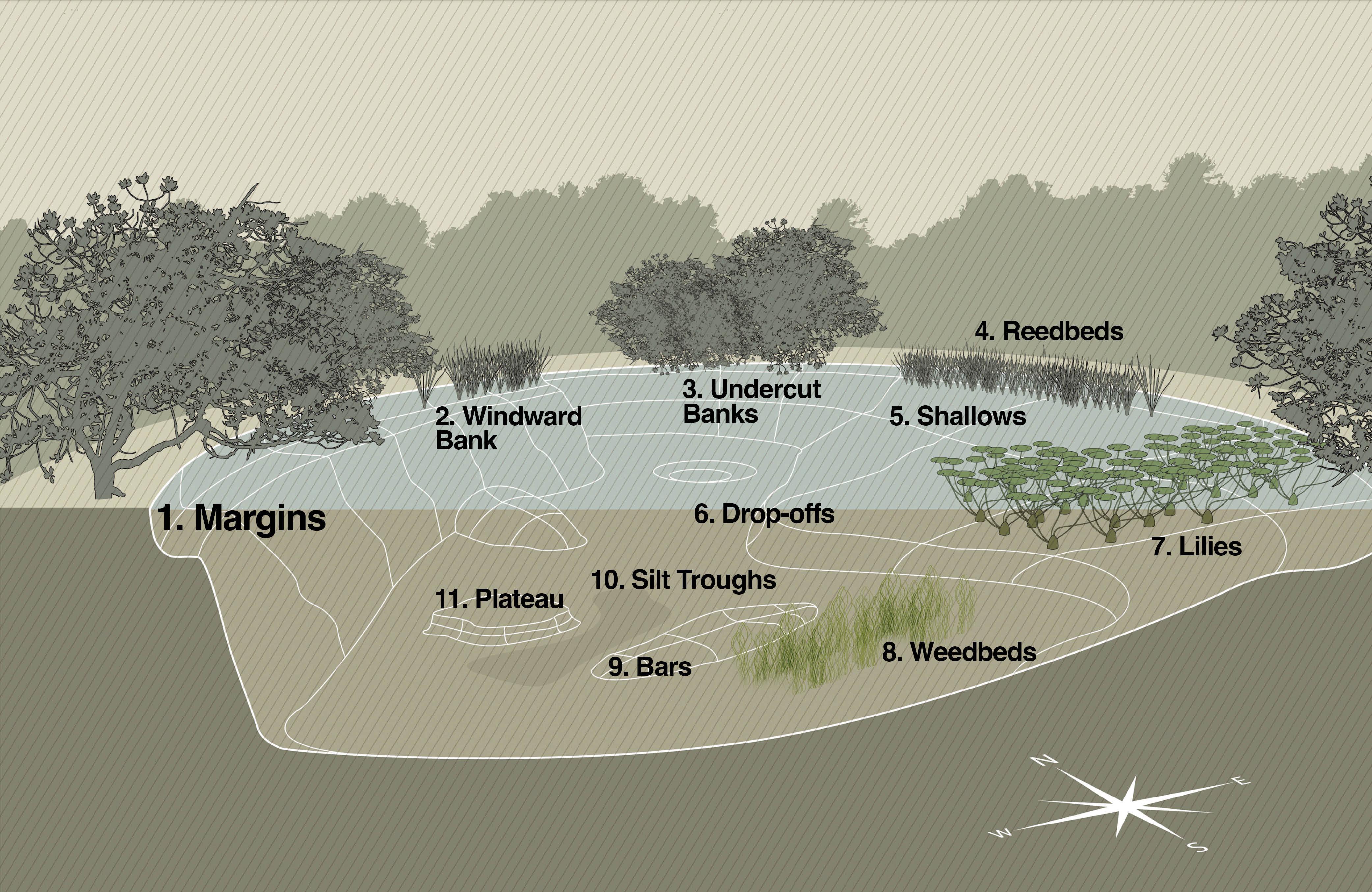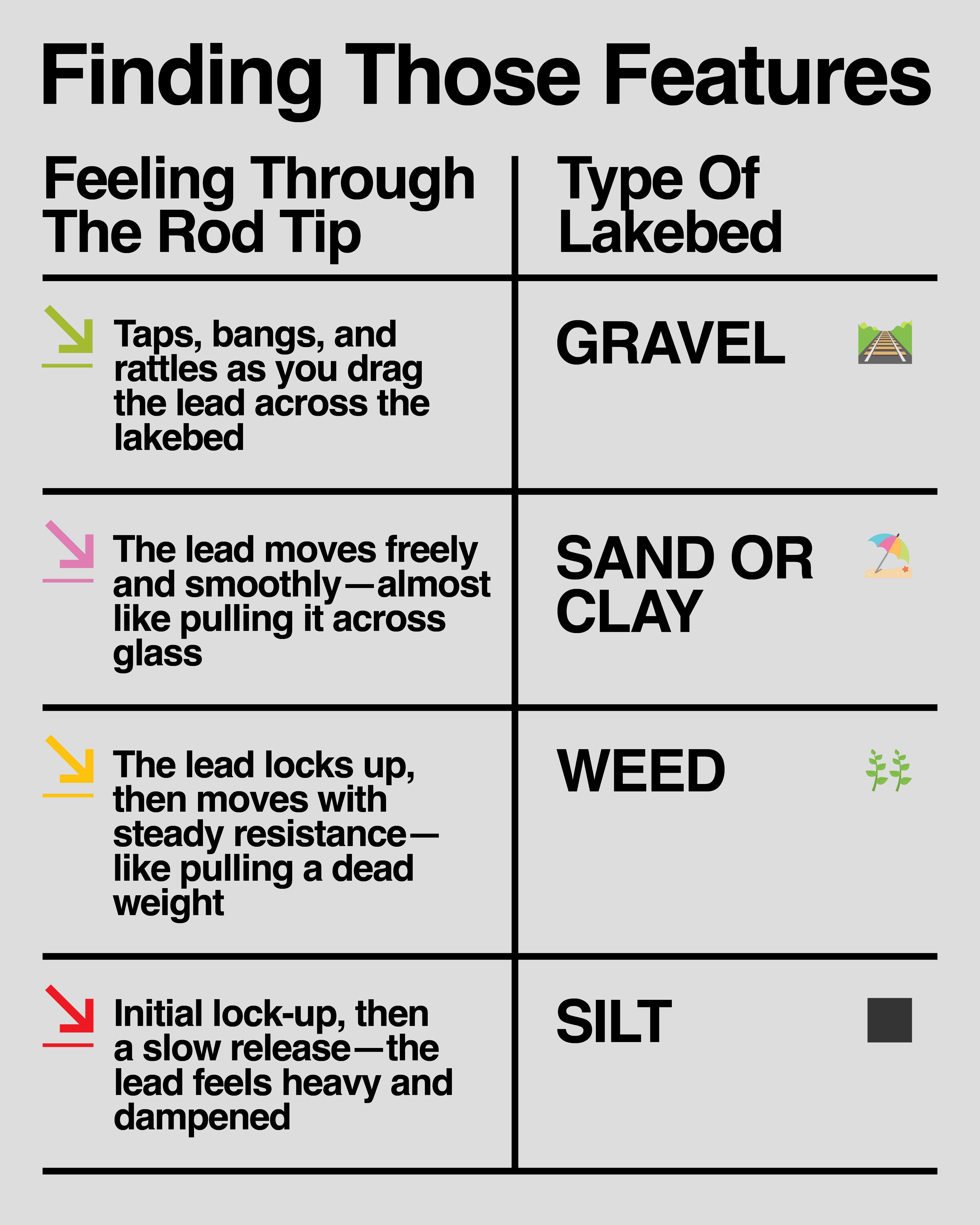
How To Read A Swim Correctly
A practical guide to identifying a lake’s most productive features
Poor watercraft and feature-finding will cost you more than just one or two fish. Learn how to read a swim—and where best to place your hookbaits.

1. MARGINS
Often the biggest and best feature on a lake—especially at commercial fisheries. Always stick to a light scattering of bait and fish for one carp at a time. A big bed of bait will 100% spook a carp in this situation.
2. WINDWARD BANK
From April to October, carp are often found on the windward bank in coloured water, searching for food. They respond quickly to changing weather conditions and can travel long distances in minutes if conditions suit them.
3. UNDERCUT BANKS
Wherever you find overhanging foliage or brambles, you’ll often find undercut banks—carp have dug out hollows beneath the margins to sit safely out of the way. Look for any marginal plant growth and present your bait close alongside.
4. REEDBEDS
Reeds provide both security and a food source, making them a natural haven for carp. When fishing to reeds, target the areas that point out or tuck back slightly—these are likely travel routes carp will pass along regularly.
5. SHALLOWS
Anywhere the sun warms the water quickly will attract carp. Shallow bays or margins are rich in both natural and angler-supplied food. Depending on when they receive sun, carp will visit at different times of the day—make a note of these timings.
6. DROP-OFFS
Drop-offs are areas where the lakebed suddenly slopes into deeper water. Like bars and plateaux, these are key patrol routes that carp will visit throughout the day.
7. LILIES
Marginal lilies are a feature on many lakes, offering both cover and feeding opportunities. You can fish them in various ways—from float fishing to casting solid PVA bags tight to the pads.
8. WEEDBEDS
Though daunting to fish into, weedbeds provide oxygen, shelter, and a rich source of natural food. They are often the biggest and best holding area on a lake, and the bigger the weedbed, the more the carp will be attracted to it. Solid PVA bags, Chod Rigs or fishing a pop-up straight off the lead (with say a one- or two-foot hooklink) offer reliable presentation here.
9. BARS
Think of them as highways for carp—long ridges created by gravel extraction, often running parallel where the pit has been worked from end to end. These are key travel routes, navigation points, and feeding zones.
10. SILT TROUGHS
Formed by wind and undertow, silt troughs are found behind or between bars and are rich in natural food like bloodworm and tubifex. Often, these are far more productive areas than the top of a gravel bar.
11. PLATEAU
A large, flat, raised feature with steep sides—think of it as a carp roundabout. It’s visited regularly and can produce at different times: carp may feed on top during sunny midday spells, or patrol the slopes during colder, overcast conditions.
If you want a view the illustration in a much larger format, you can download it here: Reading A Swim Plan.jpg

